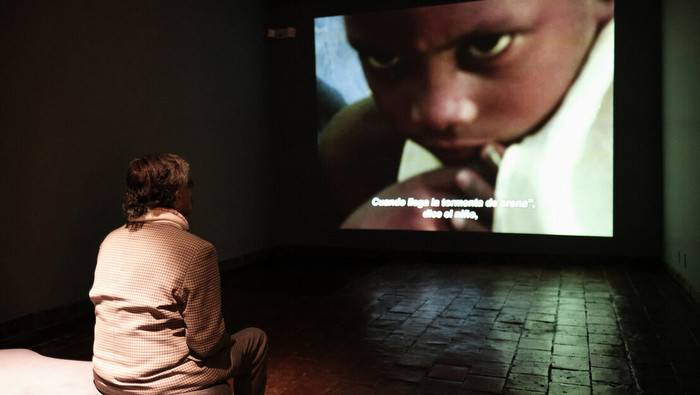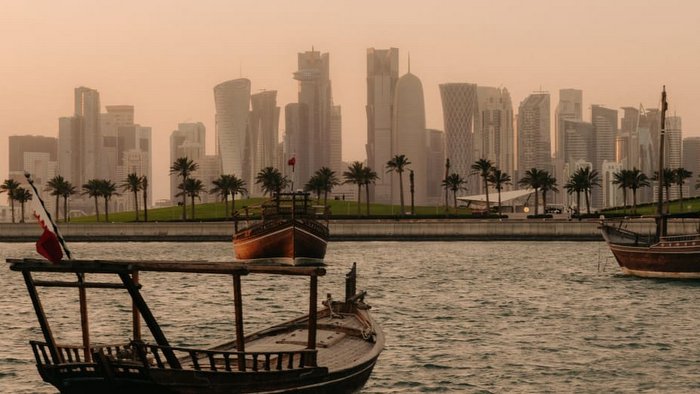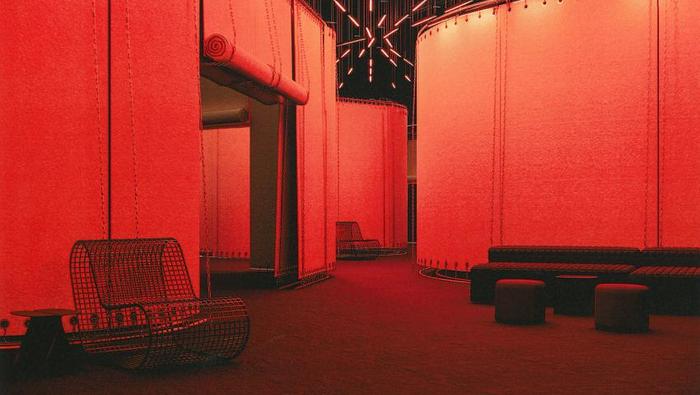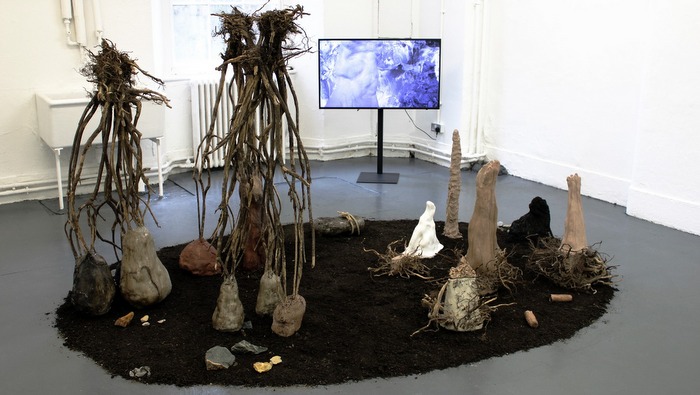The 35th Bienal de São Paulo – choreographies of the impossible moves towards a new historic milestone by crossing the Atlantic and arriving, for the first time, on the African continent. Organized by the Fundação Bienal de São Paulo and co-organized by the Instituto Guimarães Rosa (IGR), an institution of the Ministry of Foreign Affairs (MRE) responsible for Brazilian cultural diplomacy, the Bienal de São Paulo is traveling to Luanda, Angola, from September 20 to December 8.
Made possible by Brasafrica and Banco BIR, the exhibition symbolizes an important moment in the history of the Bienal, which seeks to expand its reach and promote cultural dialogue between Brazil and Angola.
The traveling exhibition in Luanda is the result of a partnership between the Fundação Bienal de São Paulo, the Instituto Guimarães Rosa and the Embassy of Brazil in Luanda, which share the objective of promoting Brazilian culture internationally. The choice of Luanda as part of the traveling exhibitions program is a recognition of the historical and cultural ties between Brazil and Angola. In 2025, Angola will celebrate fifty years of independence, with Brazil being the first country to recognize this historical occurrence.
Curated by Diane Lima, Grada Kilomba, Hélio Menezes and Manuel Borja-Villel, the traveling exhibition in Luanda brings together eight artists who offer different but complementary perspectives, thinking of the cultural and historical pluralities of the Americas, Europe and Africa.
See the list of participants selected for the traveling exhibition in Luanda:
● Aline Motta
● Bouchra Ouizguen
● Carlos Bunga
● Ilze Wolff
● Januário Jano
● Raquel Lima
● Sarah Maldoror
● Trinh T. Minh-ha
The traveling exhibition of the 35th Bienal de São Paulo in Luanda features works in a variety of formats. Among the artists exhibiting audiovisual works, Aline Motta addresses ancestral and family memories; Bouchra Ouizguen uses dance and performance in dialogue with Moroccan traditions; Ilze Wolff investigates the historical impact of architecture and urbanization in South Africa; Raquel Lima develops a poetry-performance centered on issues of race and gender; Sarah Maldoror, through her films, documents the political process based on the collective experience of African decolonization; and Trinh T. Minh-ha uses cinema to question traditional ethnography and the exercise of looking.
The show also features two three-dimensional works. The Angolan Januário Jano presents a set of twenty photographs that bring to light a historical and memorialistic perspective, reflecting on post-colonial identity in Angola. Portuguese artist Carlos Bunga is showing a site-specific installation that questions the transience of social and architectural structures, inviting the public to interact with the space in a sensory way.
The 35th Bienal de São Paulo – choreographies of the impossible explores the complexity and urgency of the contemporary world by addressing social, political and cultural transformation. The curators seek to tension the spaces between the possible and the impossible, the visible and the invisible, the real and the imaginary, highlighting multiple issues and perspectives in a poetic way.
Choreography, understood as a set of body-centered movements that defy limits, considers diverse trajectories and areas of activity, which creates strategies to face institutional and curatorial challenges.
For the curators, it has always been crucial for the exhibition to reach cities other than São Paulo. According to them, “the debates proposed by the 35th Bienal cross countless territories around the world, so the fact that the choreographies of the impossible are not restricted to the Bienal Pavilion is extremely important for the work carried out.”
For Andrea Pinheiro, the president of the Fundação Bienal de São Paulo, “the traveling exhibition of the choreographies of the impossible in Luanda marks a very important moment for the Fundação Bienal de São Paulo and for the strengthening of cultural ties between Brazil and Angola, as it is the first time we have held an exhibition on the African continent. This achievement is especially relevant in the context of the 35th edition, which featured 80% non-white artists, many from the African diaspora. The exhibition, in partnership with the Instituto Guimarães Rosa, reflects our commitment to expanding dialogue between the two countries and promoting art as a tool for social transformation. In Angola, a country with a history deeply connected to ours, this partnership takes on a special relevance, as it reaffirms our institutional commitment to recovering and presenting common narratives and histories between our peoples,” she said.
With each edition of the Bienal de São Paulo, the traveling exhibitions program takes excerpts from the exhibition to different cities, both inside and outside Brazil.
The traveling exhibition of the 35th Bienal de São Paulo – choreographies of the impossible showcases works from contexts of struggle and resistance, of imagining possibilities within impossibilities. Works that always meet new eyes, awaken sensitivities and reshape perspectives.
From the perspective of the Embassy of Brazil in Luanda, the partnership with the Fundação Bienal de São Paulo raises the profile of cooperation between the societies of Brazil and Angola and opens up space for the start of the celebrations for the 50th anniversary of the establishment of diplomatic relations between the two countries, which will be commemorated in 2025. This exhibition is one of the many dimensions of Brazilian cultural diplomacy and foreign policy towards Africa.
Brazil and Angola share a significant cultural and linguistic heritage and are countries united by a common border: ‘a river called the Atlantic’. The presence of the Bienal de São Paulo on Angolan territory is further proof that the human ties between our peoples are perennial and must continue to grow stronger.
Actions with the Fundação Bienal de São Paulo education team
During the traveling exhibitions, the Fundação Bienal de São Paulo, together with its partner institutions, conducts two fronts of educational work that complement each other. These are training actions with the city’s teams of mediators and educators, and outreach actions for the general public.
On September 18, at 2 pm, the Bienal’s education team will meet with the curators of the 35th Bienal de São Paulo to discuss the construction of the choreographies of the impossible project and its implications for the educational program, addressing conceptual, political, methodological and epistemological issues, as well as connecting the works exhibited in Luanda with local educational practices.
On September 21, at 9 am, there will be a meeting about the educational publication of the 35th Bienal de São Paulo. The education team will discuss the three movements (as their volumes are called), which are informed by the thoughts of participants in the 35th Bienal such as poet, playwright and teacher Leda Maria Martins, artist Rosana Paulino, curator and researcher Sandra Benites and Regina Aparecida Pereira and Cíntia Aparecida Delgado, leaders of the Quilombo Cafundó.
These initiatives aim to create a collaborative and dynamic learning environment, providing enriching experiences for teachers, educators, mediators and those interested in art. With a focus on interaction with the public and the dissemination of contemporary art, the program seeks to strengthen ties between cultural institutions and contribute to a more inclusive society.
About the Fundação Bienal de São Paulo
Founded in 1962, the Fundação Bienal de São Paulo is a private, nonprofit institution with no party political or religious ties, whose actions aim to democratize access to culture and foster interest in artistic creation. Every two years, the Fundação holds the Bienal de São Paulo, the largest exhibition of the Southern Hemisphere, and its itinerant exhibitions in several cities in Brazil and abroad. The institution is also the custodian of two items of Latin American artistic and cultural heritage: a historical archive of modern and contemporary art that is a standard reference in Latin America (the Arquivo Histórico Wanda Svevo), and the Ciccillo Matarazzo Pavilion, the head office of the Fundação, designed by Oscar Niemeyer and listed as historical heritage. The Fundação Bienal de São Paulo is also responsible for conceiving and producing Brazil’s representations at the Venice Biennales of art and architecture, a prerogative bestowed upon it decades ago by the Federal Government in recognition of the excellence of its contributions to Brazilian culture.
About the Embassy of Brazil in Luanda
The Embassy of Brazil in Luanda works to bring Brazil and Angola closer together. In terms of cultural diplomacy, it promotes the Brazilian and Angolan arts through the Instituto Guimarães Rosa de Luanda, which has become a cultural center of distinction in the Angolan capital.
Program
35th Bienal de São Paulo – choreographies of the impossible
Luanda, Angola traveling exhibition program – Instituto Guimarães Rosa (IGR)
Curators: Diane Lima, Grada Kilomba, Hélio Menezes and Manuel Borja-Villel
Instituto Guimarães Rosa (IGR)
Sep 20 – Dec 8, 2024
Tue – Sat, 10 am – 6 pm
Instituto Guimarães Rosa
Rua Cerveira Pereira, 19, Coqueiros
Luanda, Angola
free admission
Conversation between the education team and the curators of the 35th Bienal
18 Sep 2024
Wed, 2pm
Instituto Guimarães Rosa
R. Cerveira Pereira, 19, Bairro Coqueiros
Luanda, Angola
free admission
Meeting with the educational publication of the 35th Bienal
21 Sep 2024
Sat, 9am
Instituto Guimarães Rosa
R. Cerveira Pereira 19, Bairro Coqueiros
Luanda, Angola
free admission
On the cover: Record of the installation by Trinh T. Minh-ha during the itinerant exhibition of the 35th São Paulo Biennial at the National Museum of Art (MNA), in La Paz, Bolivia. 08/20/2024. © Christian Eugenio / São Paulo Biennial Foundation
Source: Júlia Frate Bolliger / Pickles PR














